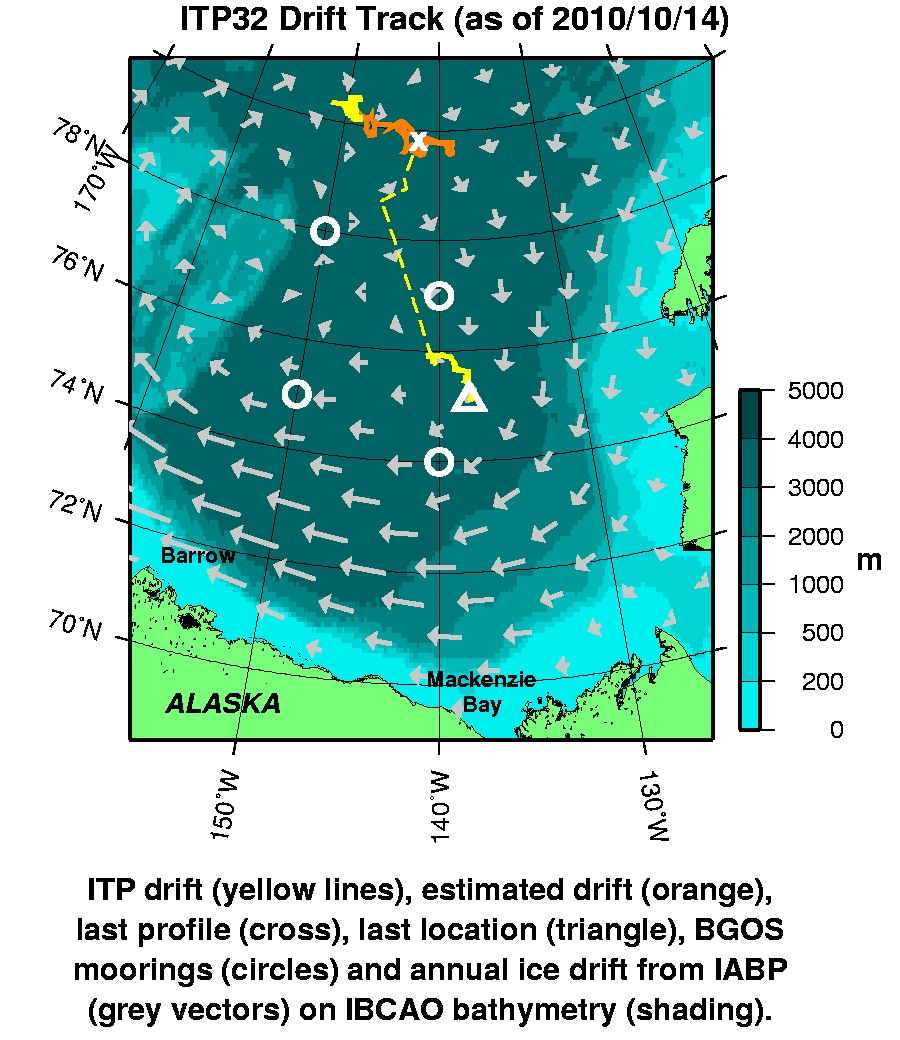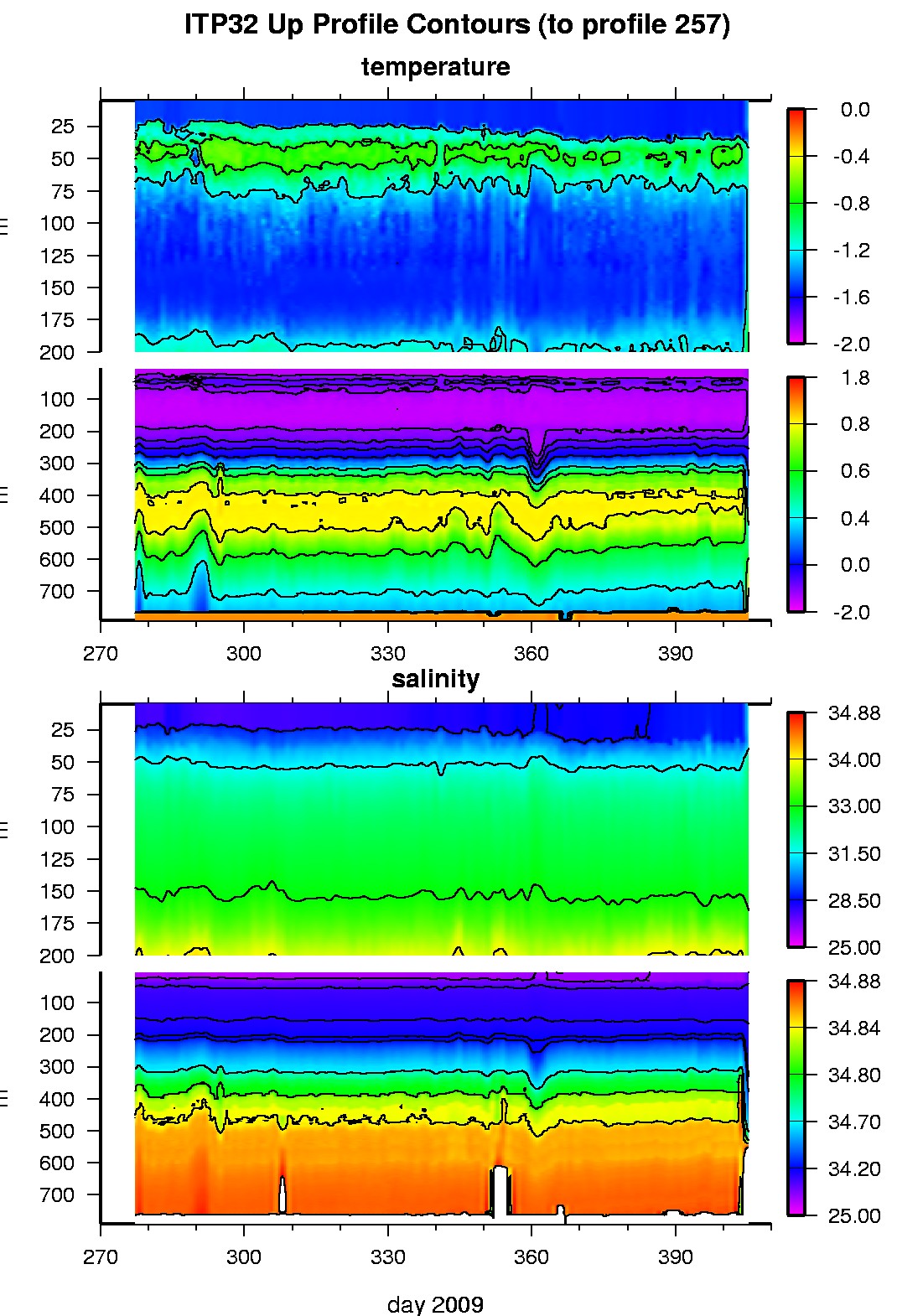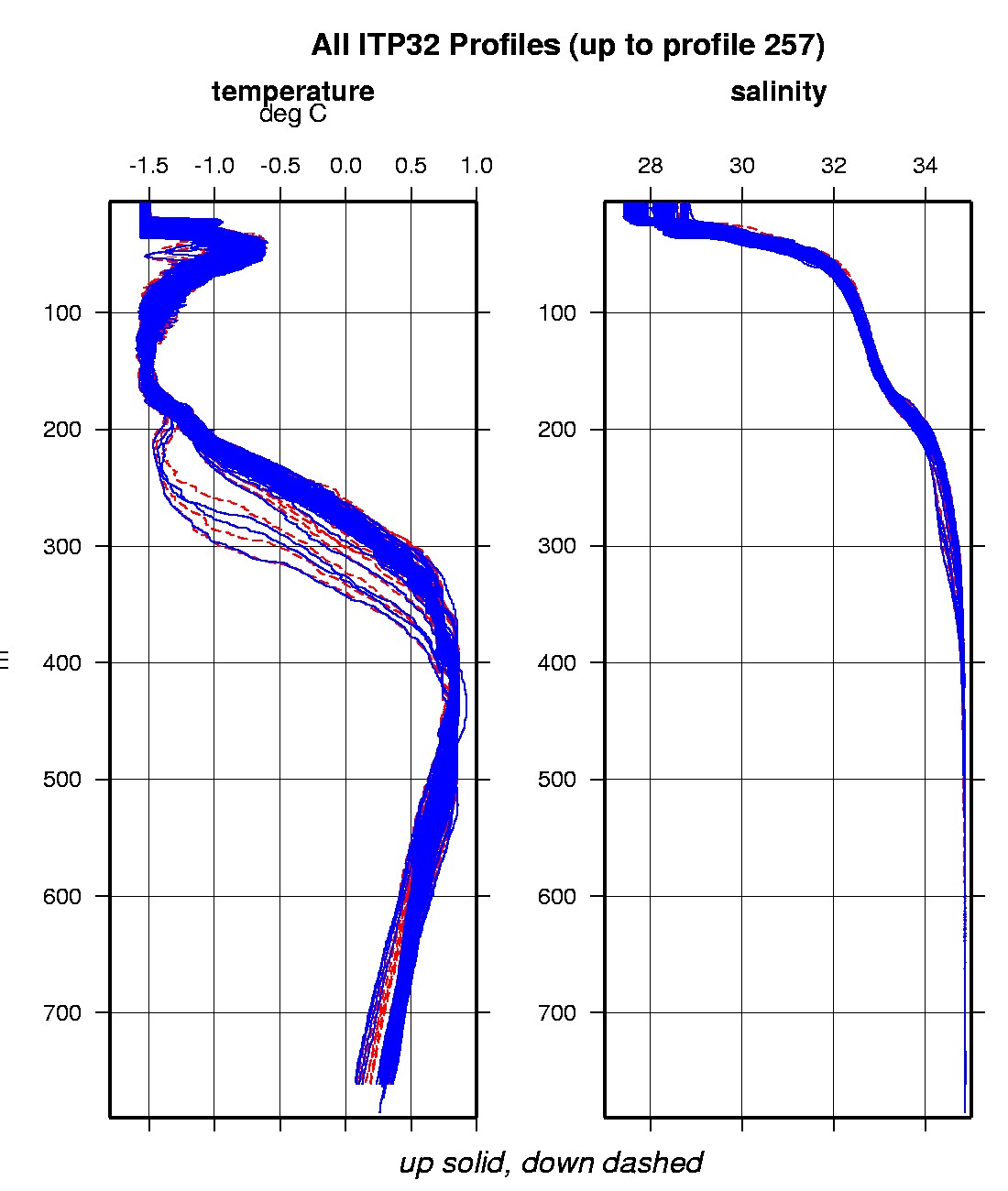ITP 32 Data Description
The ITP profiler was configured to operate with a standard sampling schedule of 2 one-way profiles between 7 and 750 m depth each day. In the surface package, the GPS receiver was powered hourly to obtain locations, and buoy temperature and battery voltage status were recorded.
After 11 days of reliable profile operation (24 profiles) and data transmission, the surface package ceased communicating until 344 days later (on September 24, 2010). When the system reappeared, it resumed sending archived status and profile data. However, presumably due to ice ridging and resetting of the surface electronics (perhaps due to a pinched communication cable), only 14 GPS locations were acquired and stored between November 2, 2009 and September 27, 2010. On the other hand, the profiler continued to operate and acquire profiles on schedule, and this backlog was gradually being telemetered by the surface package (along with current GPS locations) up until October 14, 2010, when the system ceased transmitting altogether. Ultimately, 257 profiles were provided by the profiler along the northern extent of the Beaufort Gyre circulation, and the locations of most of these had to be inferred from an external ice motion dataset.
The plots to the right are of the final, calibrated, edited data (as opposed to the raw data presented on the active instrument pages).
See the Data Products tab to the left for descriptions of the three levels (I, II, III) of data processing and to access all data.
ITP 32 data can also be found at the links below:
Level II hourly buoy location data in ASCII format: itp32rawlocs.dat
Level III 1-Hz processed profile data in MATLAB format: itp32cormat.tar.Z and itp32cormat.zip
Level III 1-db bin-averaged processed profile data in MATLAB format: itp32final.mat
Level III 1-db bin-averaged processed profile data in ASCII format: itp32final.tar.Z and itp32final.zip


